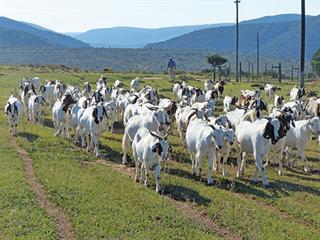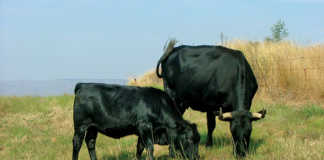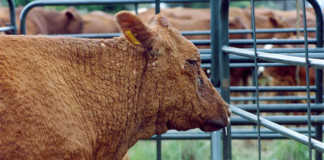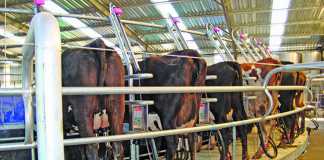
The ever-increasing failure of drugs that expel worms from the body (anthelmintics) has caused a quiet but drastic rethink of many of the ‘received wisdoms’ that have governed advice to farmers for close to a century. For a start, farmers have to stop thinking of internal parasites as an ‘evil plague’ that should be eradicated, no matter what.
Instead, they need to learn to live with parasites and prevent only the unacceptable production losses, while simultaneously breeding animals fit for the environment, rather than making the environment fit for existing animals.
Only well-integrated holistic planning has a long-term chance of success. While we will cover only helminths (worms), and mainly nematodes in this series, the parallels with external parasites and other organisms should be obvious. Holistic ‘worm management’ starts with careful flock management…
Separation of groups
Since different classes of animals vary in their susceptibility to worm infection and its effects, they should be separated into groups that are grazed, treated and managed as distinct entities.
Identify gropus most at risk
Research has shown that the animals most at risk are lambs/weanlings and pregnant/lactating ewes. The former are susceptible because they cannot yet mount an effective immune response to infection, the latter are prone to infection because of a temporary suppression of immunity. These groups must get special attention.
- Separation of pastures: Unless pastures can be divided by fencing, all sheep will be exposed to a similar challenge, regardless of whether they are susceptible or resistant to infestation. This will prevent any differentiation in management and treatment. Electric fences can be used as temporary pasturage dividers. On communal lands, herding or tethering can achieve the same result without fencing.
- Resting of pastures: If pastures can be separated, it is then possible to rest them effectively, which helps with pasture improvement. If pasture can be rested long enough, this will also have a significant effect on the survival of worm larvae and therefore the infection rate of the flock. The time needed for effective resting of pastures will vary with the climate and worm species, but a rule of thumb is at least three months in subtropical or temperate climates, and as little as one month in the tropics. The longer the rest, the better it is for worm management.
- Alternating host species: Sheep and goats share the same worm species, and alternation with one another is ineffective for worm management. However, other species, such as cattle, horses and ostriches, are generally not susceptible to the worms of sheep and goats. If they are put on pastures before or after sheep or goats, they act as ‘vacuum cleaners’ on the land, ingesting many larvae.The other advantage is that the pasture can still be utilised in its growing season, which prevents the grass from becoming senescent and optimises its usefulness. This helps to maintain the profitability of the farm.
- Mend water leaks: Water points such as troughs and windmills must not be allowed to leak, as this encourages the growth of grass. Since this is where sheep concentrate, the area can become badly contaminated by larvae.
- Avoid grass in pens: A fatal build-up of larvae on grass in pens can occur. Sheep become hungry overnight and will eat these morsels of food, along with massive numbers of larvae.
- Fence off moist areas: Areas particularly prone to high moisture and therefore the survival of worm larvae, such as streams and marshes, should be separated to reduce the chance of the flock becoming infected.
Strategic movement
The aim is to create ‘safe’ (not necessarily ‘worm-free’) pastures. By planning changes in camps, a farmer will reduce the problem, and hence need less chemical treatment.
Any grazing system where a significant proportion of the pasture is rested for a full growing season will be particularly effective.
Quarintine and movement
Do not simply introduce new animals into the flock or herd. They should be quarantined in a worm-unfriendly pen (bare earth or concrete) and treated intensively with approriate drugs. If financially feasible, do a faecal egg count reduction test to ensure minimum carry-over of drug-resistant parasites.
Next issue: other aspects of flock management.
Based on a paper by the Gareth Bath (Department of Production Animal Studies University of Pretoria) and Jan van Wyk (Department of Veterinary Tropical Diseases, University of Pretoria), distributed by the Livestock Health and Production Group of the SA Veterinary Association as part of its monthly disease report.













